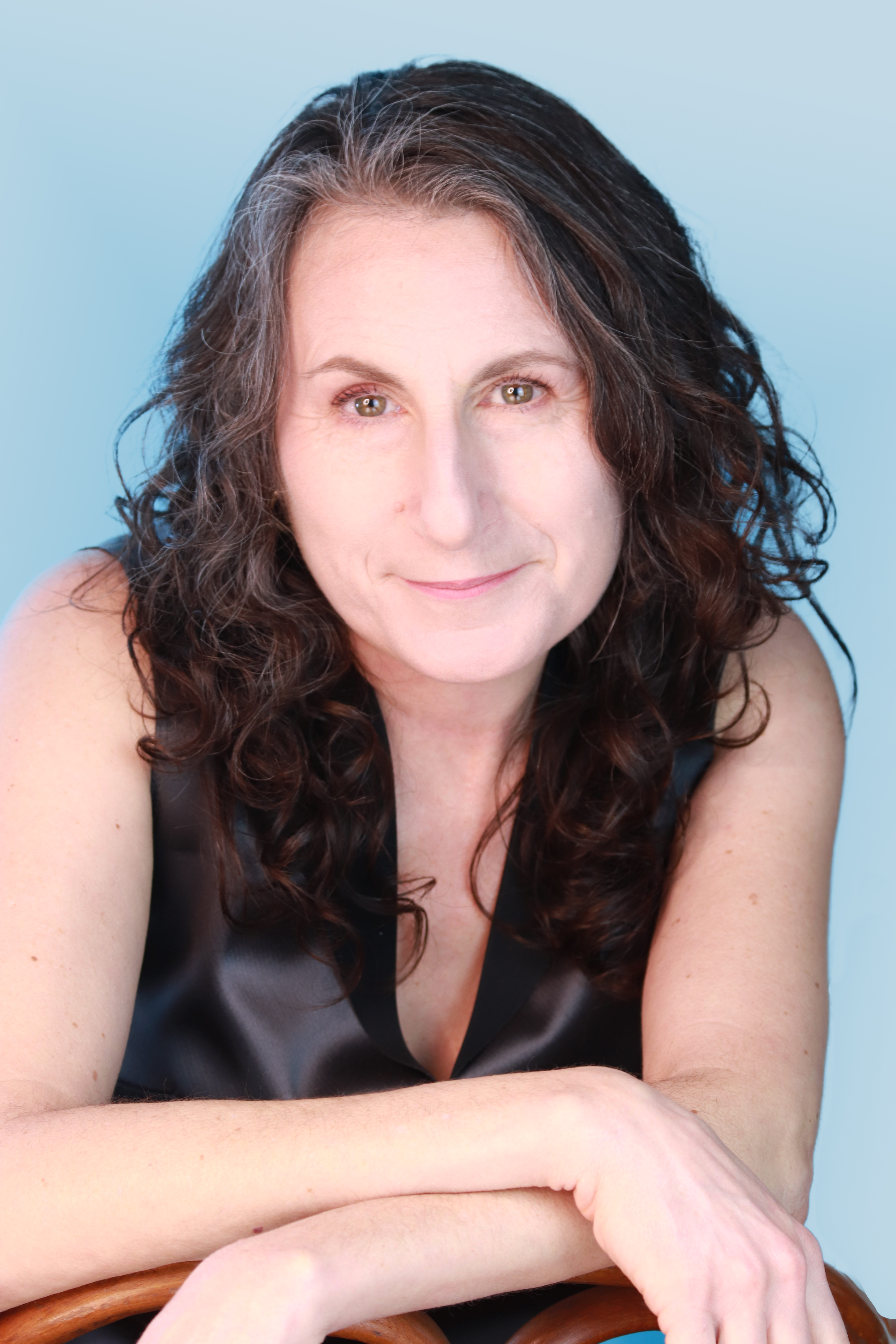Dr. Brett Ashley Kapan is a Professor and Conrad Humanities Scholar in Comparative and World Literature, as well as the director of the Initiative in Holocaust, Genocide, Memory Studies in the Jewish Studies program at the University of Illinois. Her research interests include “Holocaust art and literature, Jewish American literature, and race and ethnicity in contemporary visual and performance art.” All of those interests and themes can be found in her latest work, which is a work of fiction, a novel called Rare Stuff.
Rare Stuff is a novel of loss and longing, of grief and love and perseverance. It’s told from multiple perspectives, allowing the reader access to the inner workings of several of the characters. It’s quirky and fun (There is romance! There are whales that speak Yiddish!), and I think you’ll enjoy the book, which comes out August 1st. Professor Kaplan and I corresponded via email about it, which you can order here. Proceeds from sales of the novel will be donated to Whale and Dolphin Conservation (WDC), a non profit dedicated to exactly that; you can even “adopt” an orca or humpback whale.
If the interview below doesn’t convince you to read Rare Stuff, perhaps this book trailer (how cool is that?) will.
This interview has been edited for length and clarity.
_____
Smile Politely: What made you want to write a novel? Have you always written fiction?
Brett Ashley Kaplan: Yes! If you insert the word “wanted” into your question — I’ve always wanted to write fiction. When I was in my 20s, I wrote a novel — I neither finished it nor tried to publish it. It was about a young girl who flees from her high school by stealing the principal’s car and ends up in this sort of bohemian bisexual world of colorful characters. I doubt it was any good! But for years and years I’ve been dreaming up stories in my head. I started drafting a novel based on two actual, historical figures whose lives I found fascinating and about whom I’d learned a lot — Lee Miller and Philip Roth. In the novel their fictionalized versions meet up in Europe shortly after World War II during the period when Lee Miller was actually there, photographing the remains of the war and, famously, taking a bath in Hitler’s bathtub. But I had many other novels floating around in my head, and a few scraps on paper. One day, I got a notebook and began writing what became the whale sections of Rare Stuff. I began sort of clandestinely, looking over my shoulder, like I’m an academic and I didn’t want to get caught writing fiction! But I was really into it—the original version of the whale novel was narrated by Sol and she was thirteen and my younger daughter, Mel, helped me shape her voice. But then, when I’d only been writing for a few months, very abruptly, very sadly my father died — it was sudden, and shocking, he was only 76. My father wrote continuously for about fifty years, novel after unpublished novel. After he died, I finally felt that I had a license to write, and, also, I wanted to craft a life for him in which his novels found an (albeit small) audience, so I made up several novels that Aaron wrote.
SP: How has your life as an academic informed your approach to writing fiction?
Kaplan: From the beginning of my time writing as an academic, even as an undergraduate at the University of California, Santa Cruz, my dear friend Lara Weitzman and I would stay up all night, editing each other’s essays, taking apart each sentence, worrying about every comma. Writing has always been a serious passion for me. Equal to the ideas in any given academic paper, I always paid attention to the writing. I approach fiction in some sense like a researcher—for Rare Stuff, I read a lot about whales — they are amazing! And also researched a bit about Jack Johnson and I imported what I already knew about looted art into some aspects of the book. It was important to me to craft a character, André, who is an academic because it’s the world I’ve been living in for the past two decades — longer, really, given that my mother is a professor and my father read all the time.

Photo courtesy of Brett Ashley Kaplan.
SP: I found Rare Stuff to be a story about grief, loss, love, and yearning. Can you talk about that a little?
Kaplan: I love it that you saw it that way. Yes, it’s definitely a novel about all those things. Grief is something that you can’t predict — either at the moment of shock of discovery that someone you love is gone, or even years and years later. Five million people — or more – have died due to the pandemic and grief is everywhere these days. I hope that anyone who has ever grieved will find resonance in my novel with the endlessness of it, but also with the ways in which we can work through it, even while staying present to the pain of loss.
SP: This book is told from several different perspectives, incorporating first person, book reviews, letters, interviews, and portions of novels. What made you choose this approach, and what was most challenging and most exciting about it?
Kaplan: I love this question! Rare Stuff went through so very many different revisions. In an earlier version there were more like two voices: André narrating the outer novel and Sol, a bit younger than she landed, narrating the inner novel. My original idea was that this could be a book read by families, that maybe the parents/guardians could read aloud the inner novel to kids in the range of 10 to 13, something like that, and then read the outer novel to themselves. When my kids were those ages we spent hours and hours reading that way, together. Anyway, it turned out to be a terrible idea, apparently, from a marketing perspective. Also, it ultimately did not feel right to have André narrate everything because he couldn’t really see into the intricacies of Sid’s thoughts and feelings. So, this was a very challenging aspect of the endless series of revisions — now, the inner novel can be read by anyone but is meant to be narrated by Aaron. It’s Aaron trying to talk to Sid in ways that he couldn’t when he was alive.
What was most exciting about this complicated structure was making up all the different voices. I especially enjoyed writing the book reviews for imaginary novels. That was probably the most fun of all. I love novels that take on multiple perspectives — books like Richard Powers’s brilliant The Overstory, or Nicole Krauss’s The History of Love — so I wanted to play a bit with different voices.
SP: What have been the most rewarding aspects of this writing project and its promotion?
Kaplan: Oh, hands down, the most rewarding part has been the two book clubs Rare Stuff and I were featured in in Los Angeles this [past] June. It was an absolute pleasure to sit down with a bunch of smart women and hear their feedback, answer their questions, and, in some cases, sit back and let them argue about what the characters may or may not have been feeling!
The most rewarding parts about writing it were the amazing conversations I had with the fiction writers on the faculty and my fellow students in the MFA program at UIUC. I learned so much from David Wright Faladé, Alex Shakar, and Ted Sanders, all just brilliant writers and super generous readers. Working with them was a treat.
SP: Do you have plans for more fiction?
Kaplan: Yes! I am working on a second novel, Vandervelde Downs. It’s a literary novel with a braided structure which explores what happens when multiple strands of refugeeism and migration interfuse with looted art. Loss, displacement, and trauma arising from the Holocaust intersect with Vietnamese refugees fleeing to England in the late 1970s. These histories are put into fantastical conjunction through a fictionalized version of Velázquez’s stunning, arresting portrait of his slave, Juan de Pareja. In reality, this portrait hangs in New York’s Metropolitan Museum of Art. In Vandervelde Downs, though, it was looted from a European Jewish family by a mysterious Belgian gentleman named Bertrand Vandervelde who may or may not have hidden it in a Vietnamese Refugee Center in provincial England.
The thickest strand of the multiple narrative braid of Vandervelde Downs centers around Poppy Solomon, a rough-round the edges thirty-something furniture refinisher whose life gets turned upside down in 1999, at the start of the action: her lease runs out, her landlord turns her refinishing studio into a bar, and her brother phones to tell her that her grandmother, Lily, just suffered a stroke. Thus adrift, Poppy relocates from New York back to her hometown in England to look after Lily. There she meets Maxwell Johnson, an agent assigned to the legal case involving the recovery of looted art — a collection her mother’s family, the Haroche-Lévys, with branches stretching from Vienna to Paris, were forced to sell during the war. Poppy’s mother Vera wanted nothing to do with the lawsuit because, as a Kindertransport survivor, she wanted nothing to do with the past. But her mother’s cousin Adele drags Poppy into the lawsuit and the main plot revolves around Max and Poppy’s search for the painting. The other cords of the braid, sprinkled through Poppy and Max’s story, are a long interview with Lily, Vera’s Kindertransport memoir, Vandervelde’s diary, and Max’s interview with Mai Le Duong, a painter who had met Vandervelde at the refugee center. I’m a long way from finishing this novel and I’m also working on a co-written (with the marvelous [Krannert Art Museum curator] Amy Powell) biography of the painter and UIUC alumna, Louise Fishman. This summer I’ll be researching Vandervelde at the British Library and interviewing many people who knew Louise.
SP: What are your favorite things in C-U? Food? Activities? Parks?
Kaplan: True confession: I grew up in New York City and perpetually long for the city, for its buzz and madness. But, there are so many things I appreciate here. First and foremost the amazing community of friends I’ve had the great pleasure and honor of knowing — some for 20 years — you know who you are and how much I appreciate you. Then there’s the farmers markets, C4A, Meadowbrook, and Japan House, Allerton, Homer Lake. For food: I love the [Common Ground Food] Co-op and Harvest Market and Sticky Rice (although I wish they served wine!), Himalayan Chimney and Kohinoor, my husband often gets take out from Stango, which has a yummy ginger drink that we love. For drinks: Ladro Enoteca is great, and Punch!, and I’m so thrilled that The Literary is here. That’s become my go to meet-people-for-drinks-while-gazing-at-books spot. There’s so much going on here and I appreciate all the options!








